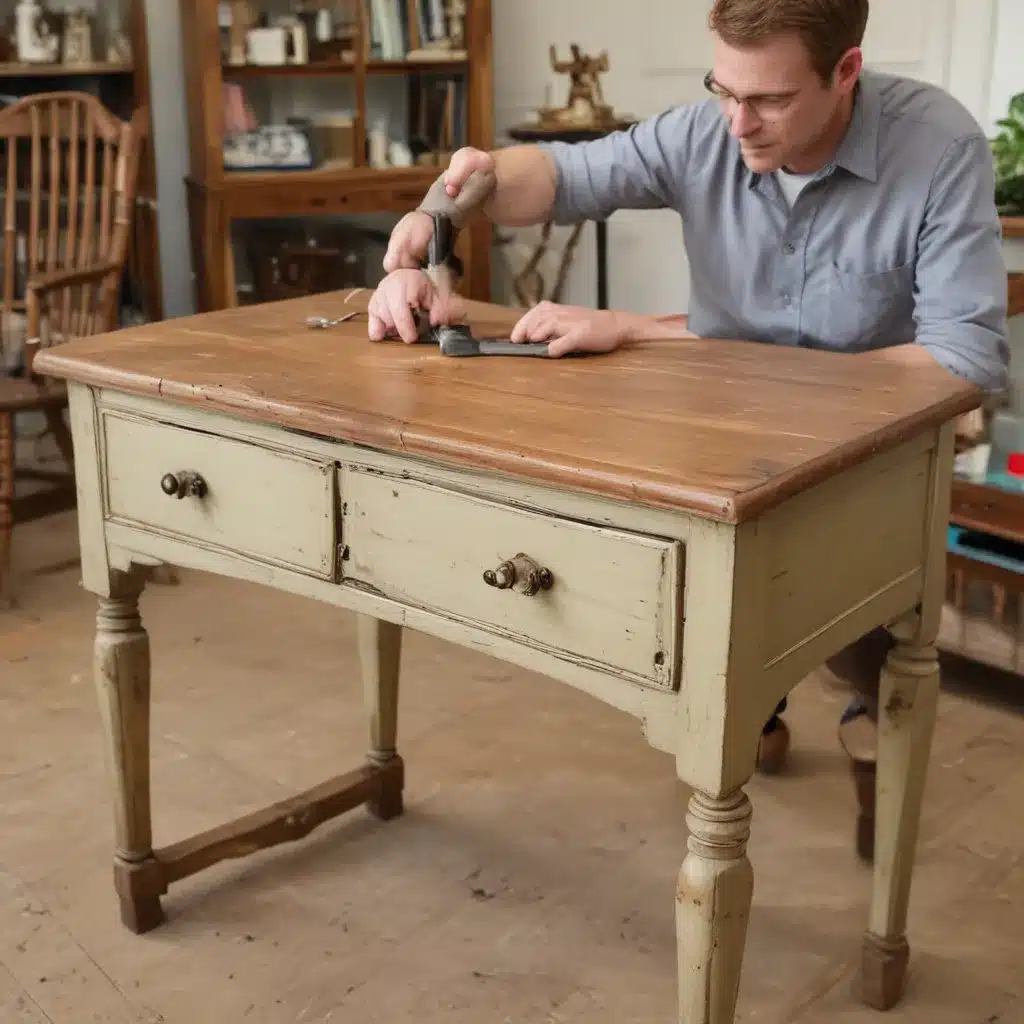
The Furniture Whisperer’s Guide to Resurrecting Treasured Pieces
As the owner of a building and renovation company in Aberdeen, UK, I’ve seen my fair share of dilapidated furniture. But you know what they say – one person’s trash is another person’s treasure. Or in my case, the raw materials for a stunning, one-of-a-kind restoration project.
You see, I like to think of myself as a furniture whisperer of sorts. I have this uncanny ability to look at a worn-out, neglected piece and envision its true potential. It’s like I can hear the stories it has to tell, the memories it’s collected over the years. And let me tell you, there’s nothing more satisfying than bringing those stories back to life.
Embracing the Imperfections
Now, I know what you’re thinking – why bother with old furniture when you can just go out and buy something brand new? Well, my friends, that’s where you’re missing the point. You see, the beauty of old furniture lies in its imperfections. Those little nicks, scratches, and worn spots – they’re not flaws, they’re character. They’re the scars that tell the story of the piece’s journey.
Think about it this way – would you rather have a shiny, mass-produced coffee table that looks like it came straight out of a catalog, or a weathered, one-of-a-kind piece that’s been lovingly restored to its former glory? For me, the choice is easy. I’ll take the character and charm of a well-loved piece any day.
The Art of Restoration
Of course, bringing new life to an old piece of furniture is no easy feat. It takes skill, patience, and a whole lot of elbow grease. But I wouldn’t have it any other way. There’s something incredibly rewarding about taking a neglected item and transforming it into a stunning, functional work of art.
The first step, of course, is to assess the damage. Is it just a few surface scratches and scuffs, or is the piece in need of more serious repair? Once I’ve got a clear picture of the work that needs to be done, I can start planning my approach.
Maybe I’ll need to strip away layers of old paint or varnish, sanding down the surface until it’s smooth and ready for a fresh coat. Or perhaps I’ll need to do some minor woodworking, repairing cracks or loose joints. And of course, no restoration would be complete without a meticulously applied finish – whether it’s a rich stain, a sleek lacquer, or a hand-rubbed wax.
Breathe New Life into Treasured Pieces
But the real magic happens when I start to see the piece come back to life. As I work, I can almost feel the furniture’s energy shifting, like it’s grateful to be rescued from the brink of oblivion. And when I finally stand back and admire the finished product, it’s like seeing an old friend in a whole new light.
Take, for example, the antique armchair I rescued from a local thrift store. It was in rough shape, with torn upholstery, wobbly legs, and a finish that had seen better days. But I could see the potential, the way the graceful curves of the frame and the intricate wood carvings hinted at its former glory.
After hours of painstaking work – sanding, regluing, and carefully selecting the perfect new fabric – the chair was transformed. The rich, mahogany-stained wood gleamed, and the plush, velvet upholstery gave it a luxurious, timeless feel. It was like I had breathed new life into a treasured family heirloom.
And that’s the thing – when you restore an old piece of furniture, you’re not just fixing up a physical object. You’re preserving a piece of history, a tangible connection to the past. You’re honoring the craftsmanship and care that went into its creation, and ensuring that it can continue to be enjoyed for generations to come.
The Joy of the Journey
Of course, the restoration process isn’t always smooth sailing. There have been plenty of times when I’ve hit a roadblock, or when a piece has proven to be more challenging than I anticipated. But that’s all part of the fun, isn’t it? The thrill of the challenge, the satisfaction of overcoming obstacles – it’s what keeps me coming back, project after project.
And let’s be real, sometimes things don’t go exactly according to plan. I remember this one time when I was refinishing an old dresser, and I managed to splatter stain all over my favorite shirt. Talk about a wardrobe malfunction! But you know what they say – the best laid plans often go awry. And in the end, the end result was worth a few battle scars.
The Rewards of Upcycling
At the end of the day, the real reward of restoring old furniture isn’t the final product itself – it’s the journey. It’s the sense of accomplishment, the pride in knowing that you’ve breathed new life into a forgotten treasure. And let’s not forget the environmental impact – by giving new life to old pieces, we’re keeping perfectly good furniture out of landfills and reducing the demand for brand-new, resource-intensive furnishings.
So, if you’re sitting there looking at your own weathered, worn-out pieces and wondering if it’s time to just give up and go shopping, I say – hold on to your hats, my friends. Because with a little elbow grease and a whole lot of passion, you can transform those humble treasures into stunning, one-of-a-kind masterpieces.
Who knows, you might even discover a hidden talent for furniture restoration along the way. And trust me, there’s nothing quite like the feeling of standing back and admiring your handiwork, knowing that you’ve breathed new life into a piece that was once destined for the scrapheap.
So what are you waiting for? Grab your tools, roll up your sleeves, and let’s get to work! The world of furniture restoration is waiting, and I promise – the journey is well worth it.
















